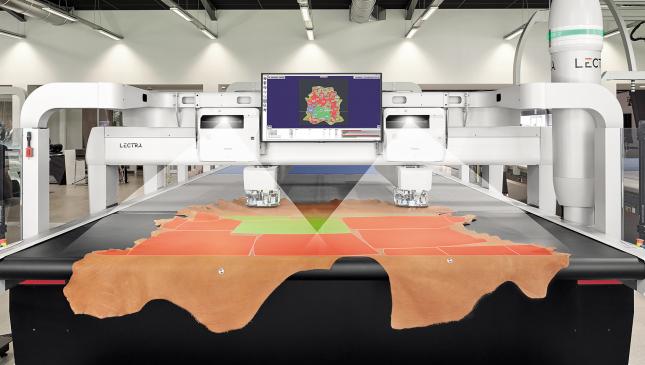1. Reduced leather consumption
Digital cutting technology makes it possible to cut leather with no buffer between parts—an impossible task using manual die-press technology. Digital processes significantly improve material usage, lowering costs by optimizing the use of costly leather hides while transforming the production of cut leather parts into a more streamlined and sustainable activity.
2. Continuous improvement monitoring
Digital cutting equipment allows engineers to track KPIs—including ROI and TCO—previously impossible to measure and adjust them at will to meet continuous improvement objectives.
3. Shorter lead-time
Thanks to the flexibility of digital cutting, you can respond to RFQs, start a new program, update steering wheel designs or overcome production peaks in days—instead of the weeks required to retool and replace dies.
4. Better standardization of cut part dimensions
After several days of production, dies become worn, impacting the quality of cut parts. Digital cutting technology enables superior process capability and repeatability (CPK/CMK), which make it possible to reach the highest industry standard for optimal quality standardization over time.
5. Manage your turnover
Digital cutting equipment reduces time to proficiency for new hires by two-thirds, making the estimated turnover cost of a die press cutting room 50% more expensive.
6. Integration
Digital cutting solutions enable seamless integration with ERP and MES systems. This eliminates paper reporting while making it possible to send jobs directly to the shop floor.
In summary, digital transformation can enable automotive steering wheel suppliers to realize significant savings long-term by reducing labor, optimizing leather efficiency and maximizing operational efficiency. By implementing digital prototyping together with digital leather cutting, it’s possible to put in place a fully integrated process that maximizes leather utilization, driving down the cost per cut leather part.
The improved productivity efficiency of digitalized processes enables a fast return on investment. Moreover, vehicle steering wheel suppliers that currently outsource cutting activities stand to further improve profitability by taking over leather-cutting tasks and integrating digitalized cutting processes into their own manufacturing operations.
